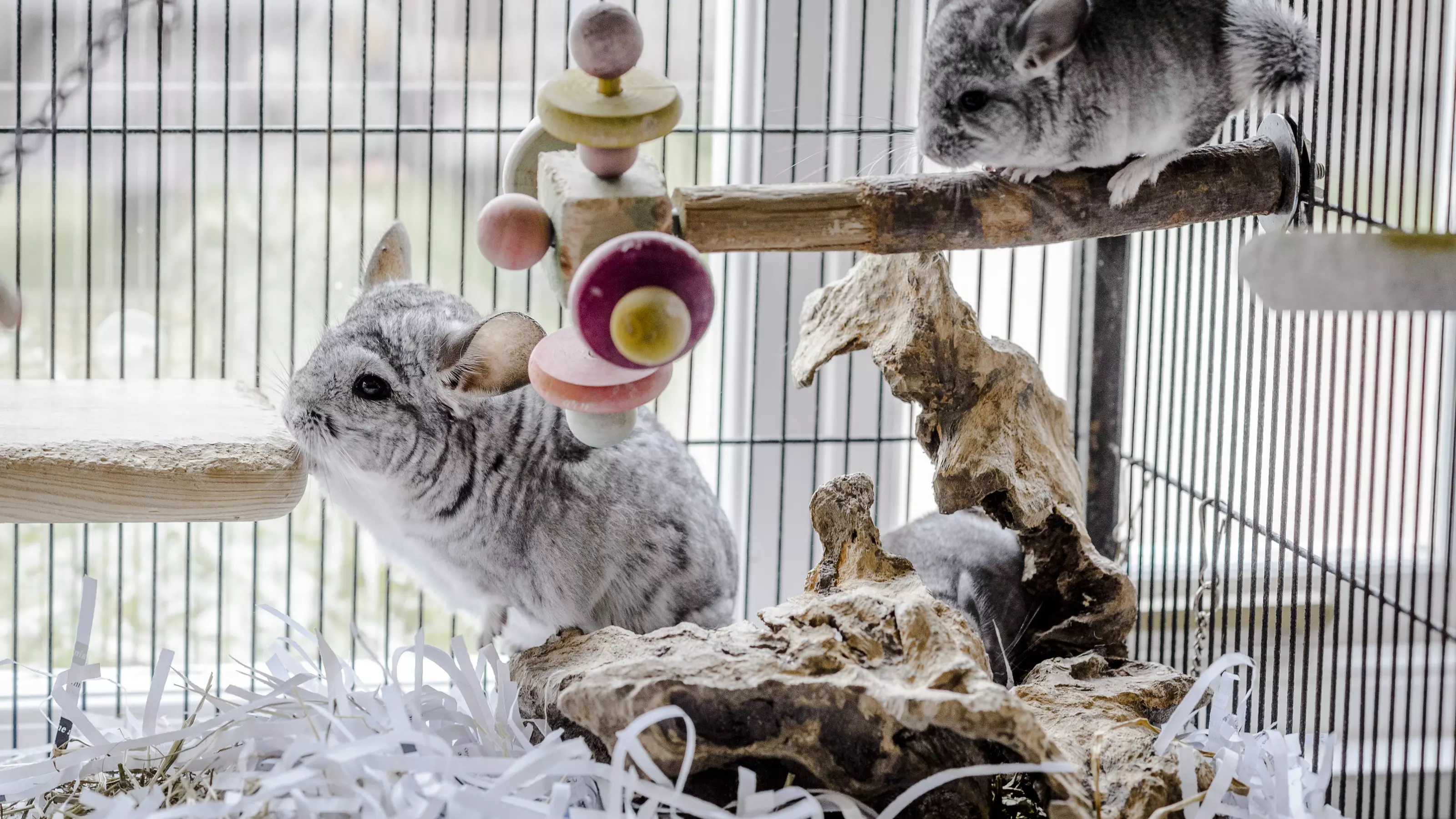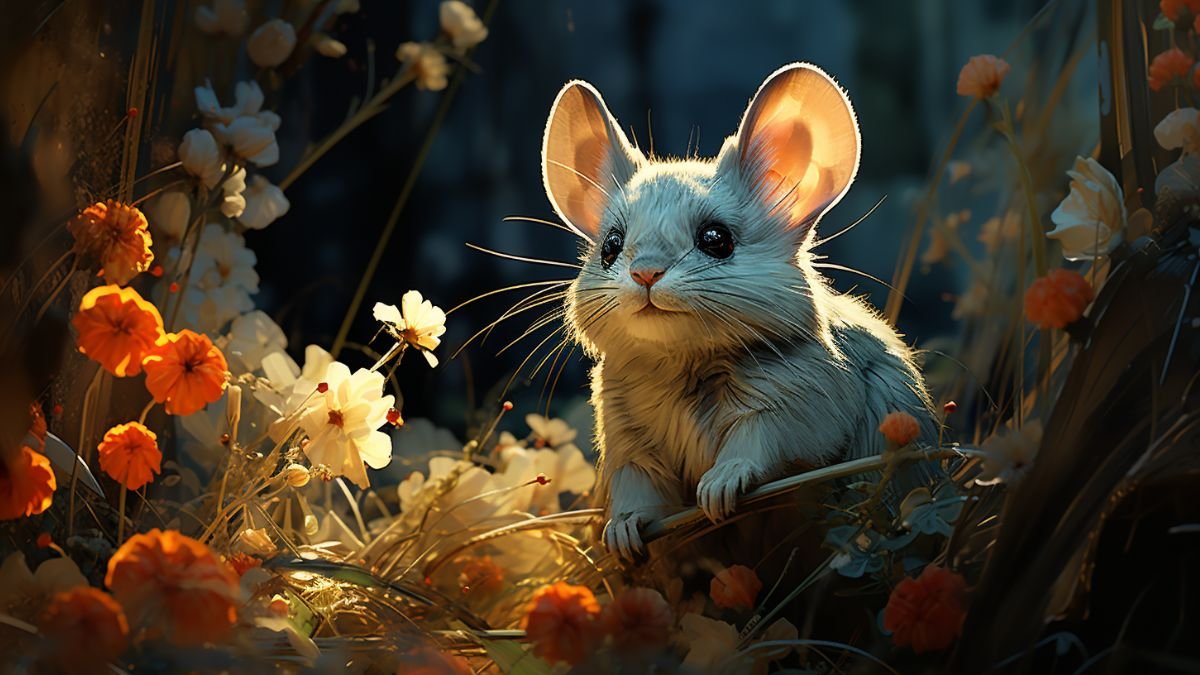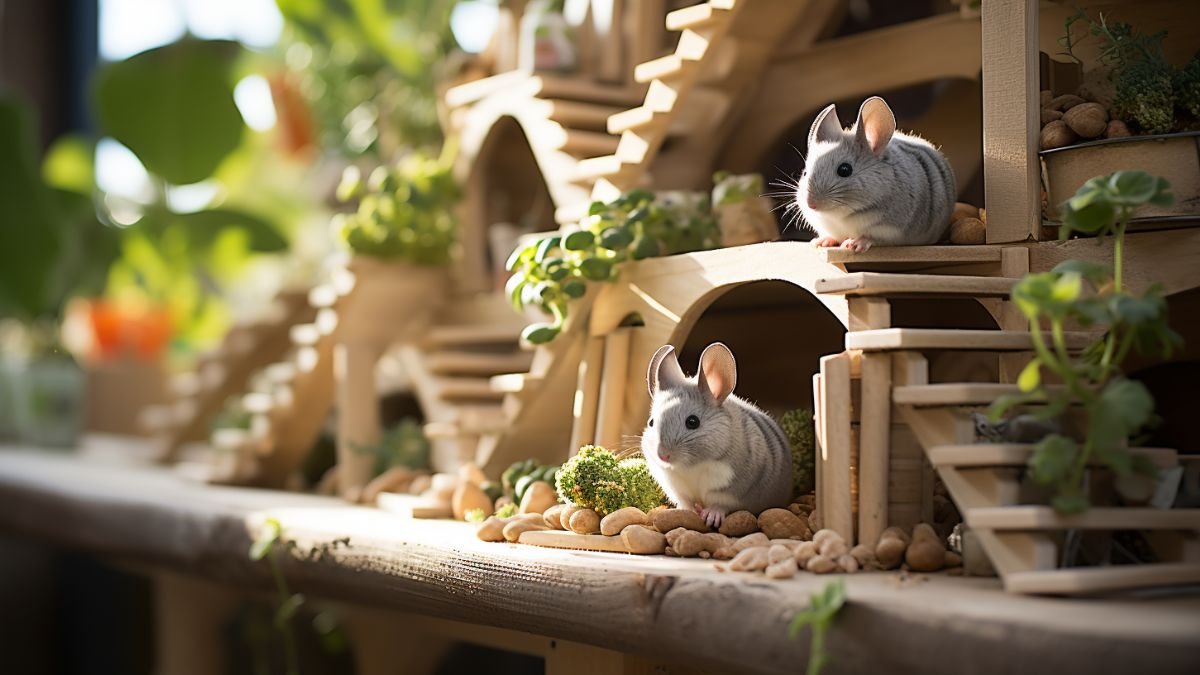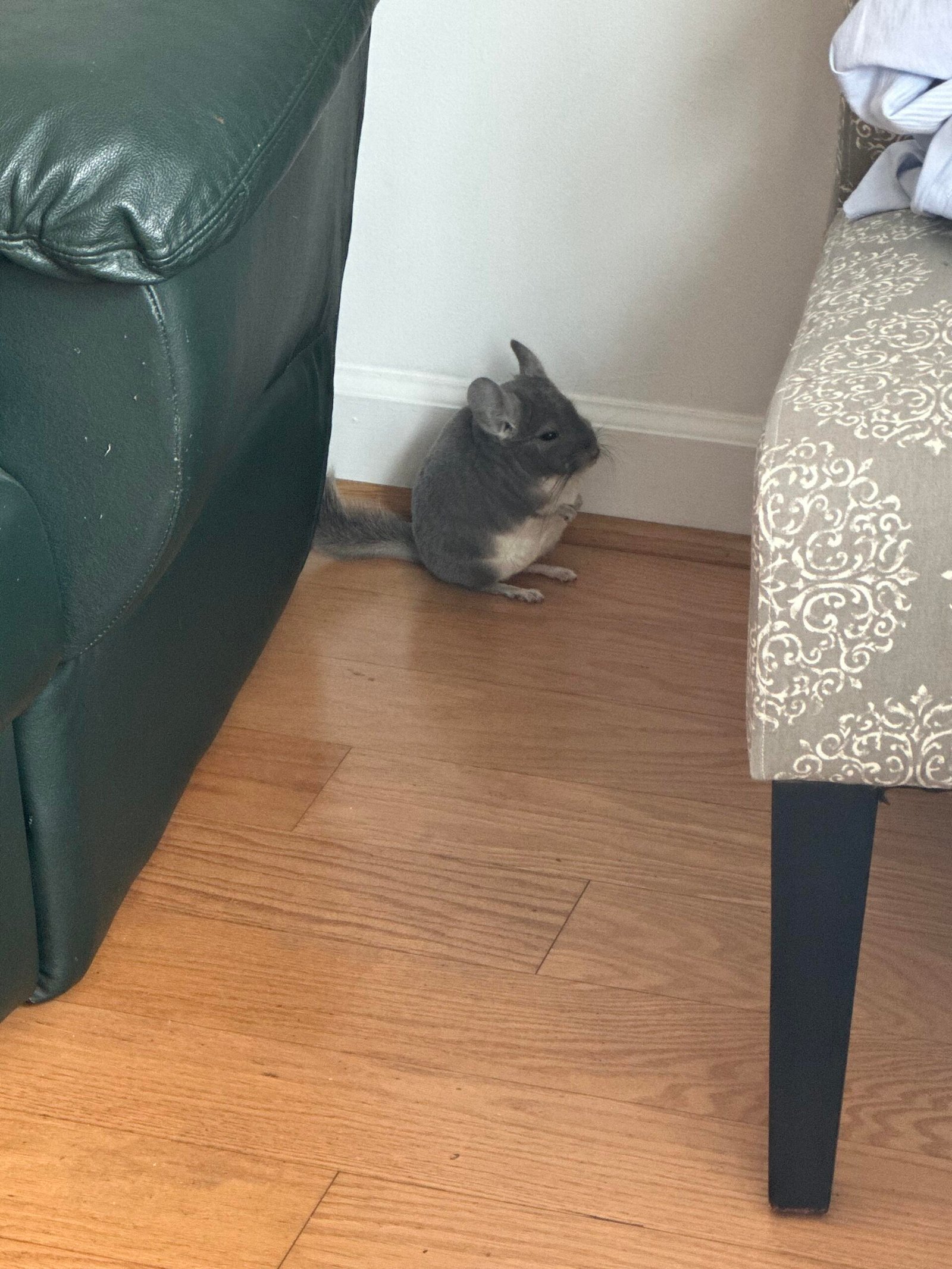
Bringing a chinchilla into your home can be an exciting experience for both you and your children. But before you let your little ones cuddle and play, it’s important to know how to introduce these delicate pets safely.
You want your kids to enjoy bonding with their new furry friend without causing stress or harm. In this guide, you’ll discover simple, proven tips to make that first meeting smooth and enjoyable for everyone. Keep reading to ensure your chinchilla and children start their friendship on the right paw.

Choosing The Right Time
Choosing the right time to introduce chinchillas to children is very important. Chinchillas are gentle animals but can be shy and sensitive. Picking the right moment helps create a positive experience for both the pet and the child.
Timing affects how well the chinchilla adjusts to new people. It also helps children learn to respect and care for the pet. A calm and patient start makes future interactions easier and safer.
Consider The Child’s Age And Maturity
Young children may not understand how to handle chinchillas carefully. Wait until the child can follow simple rules. Children around five years old or older usually show better control. Teach them to be gentle and quiet around the pet.
Choose A Quiet Time Of Day
Chinchillas are active at certain times, mostly early morning or evening. Pick a quiet time when the pet is calm. Avoid times when the chinchilla is eating or sleeping. This reduces stress and helps the animal feel safe.
Ensure The Child Is Calm And Focused
Children should be calm and ready to learn before meeting the chinchilla. Avoid introductions when the child is tired or distracted. A focused child listens better and handles the pet with care. This creates a peaceful environment for everyone.

Preparing Children Mentally
Preparing children mentally helps them understand chinchillas better. It builds respect and care for the pet. Clear ideas reduce fear and surprise. Kids feel ready and excited to meet their new friend.
Teaching patience is important. Chinchillas move fast and need gentle handling. Kids learn to wait and watch quietly. This keeps the pet calm and happy.
Explain Chinchilla Behavior
Talk about how chinchillas act and why. Share that they are shy and may hide. Teach children to speak softly and move slowly. This helps chinchillas feel safe around them.
Set Clear Rules
Make simple rules for playing with chinchillas. Show kids how to touch gently. Tell them not to chase or scare the pet. Rules protect both the pet and the child.
Discuss Responsibility
Explain that chinchillas need daily care. Children should know feeding and cleaning routines. Help them understand the pet’s needs. This builds respect and responsibility.
Use Visual Aids
Show pictures or videos of chinchillas. Visuals help children see what to expect. It makes learning about the pet fun and clear.
Role-play Interaction
Practice gentle touches using a soft toy. Role-play helps kids learn safe ways to hold chinchillas. It builds confidence before meeting the pet.
Creating A Safe Environment
Creating a safe environment is the first step to introducing chinchillas to children. It helps protect the pet and keeps kids calm. Both need a space where they feel secure and relaxed. A well-prepared area reduces stress and prevents accidents.
Children must learn to respect the chinchilla’s space. The environment should be quiet and free from sudden noises. This helps the chinchilla stay comfortable and trust the child more easily.
Choose A Calm And Quiet Space
Pick a room with low noise and few distractions. Avoid places with loud music or heavy foot traffic. Calm spaces help chinchillas feel safe and less frightened. Kids can also focus better in quiet areas.
Set Up A Secure Play Area
Use a playpen or a small enclosed space for chinchilla playtime. It stops the chinchilla from running away or hiding in unsafe spots. Make sure there are no sharp edges or small gaps where they can get stuck.
Remove Harmful Objects
Check the area for wires, small toys, or plants that might harm chinchillas. These animals like to chew, so keep dangerous items out of reach. Clear floors and surfaces prevent accidents and injuries.
Use Soft Lighting
Bright lights can scare chinchillas. Use soft, natural lighting during interactions. This creates a calm mood and makes the chinchilla feel more comfortable. Avoid sudden flashes or harsh lights.
Provide Safe Toys And Chews
Offer toys made for chinchillas to keep them busy. Safe wooden chews help maintain their teeth and keep them happy. Avoid plastic or painted items that may be toxic.
Teaching Gentle Handling
Teaching children to handle chinchillas gently is key for safety and trust. Chinchillas are small, fragile animals. Rough handling can hurt them or cause stress. Kids need clear, simple rules to follow.
Start by explaining how soft and delicate chinchillas are. Show children how to use slow movements. Let them watch you hold the chinchilla carefully. This sets a good example.
Explain The Importance Of Being Gentle
Tell children chinchillas have thin bones and sensitive fur. Squeezing or dropping can cause injuries. Use words they understand, like “soft,” “slow,” and “quiet.” Emphasize patience and kindness.
Demonstrate Proper Holding Techniques
Show kids how to cup their hands around the chinchilla’s body. Support the chest and back legs gently. Keep the chinchilla close to their body for safety. Practice this step several times with guidance.
Supervise Every Interaction
Always watch children when they handle the chinchilla. Step in if they get too rough or nervous. Praise calm and gentle behavior. This builds confidence and care in handling pets.
Recognizing Chinchilla Behavior
Recognizing chinchilla behavior helps keep children and pets safe. Chinchillas have unique ways of showing feelings. Understanding these signs makes handling easier and fun for kids. It also helps avoid stress for the chinchilla.
Understanding Chinchilla Body Language
Chinchillas use body moves to show how they feel. If a chinchilla is calm, it sits quietly and breathes slowly. When scared, it might freeze or jump suddenly. Watch the ears too. Ears forward mean curiosity, while pinned back ears show fear or anger.
Signs Of Stress In Chinchillas
Stress looks like fast breathing or shaking. A stressed chinchilla may hide or refuse food. It might also bite or squeak loudly. These signs warn children to be gentle and give space.
Happy And Playful Chinchilla Behavior
Happy chinchillas jump and run around. They may bounce on their hind legs. Soft chewing sounds show contentment. Encourage kids to watch and enjoy these moments quietly.
Recognizing When A Chinchilla Needs Rest
Chinchillas sleep a lot during the day. Closed eyes and stillness mean they rest. Avoid waking them up suddenly. Respecting their rest time helps keep them healthy.
Setting Clear Boundaries
Setting clear boundaries helps keep both chinchillas and children safe. It teaches respect and care for the pet. Children learn how to behave around chinchillas. This reduces stress for the animal and avoids accidents.
Boundaries create a calm and secure environment. Chinchillas feel safe and less scared. Kids understand what is okay and what is not. This makes the pet-child relationship stronger and happier.
Define Safe Touching Rules
Explain to children how to touch chinchillas gently. Use slow and soft strokes. Avoid grabbing or squeezing the pet. Show where the chinchilla likes to be touched. Teach kids to stop if the chinchilla moves away.
Set Time Limits For Interaction
Limit playtime to short sessions. Chinchillas get tired or stressed quickly. Breaks help them feel calm. Kids learn to respect the pet’s needs. Use a timer to keep track of playtime.
Designate A Quiet Space For Chinchillas
Choose a calm area for the chinchilla’s cage. No loud noises or rough play nearby. Children should know not to disturb the cage. This space is the chinchilla’s safe zone. It helps the pet relax and rest well.
Supervising Interactions
Supervising interactions between chinchillas and children is very important. Chinchillas are small and delicate animals. Children may not know how to handle them gently. Watching every moment helps keep both safe.
Supervision helps children learn the right way to touch and hold chinchillas. It stops rough play before it starts. Careful watching also lets adults notice signs of stress in the pet early.
Stay Close And Watch Carefully
Always be near when children meet chinchillas. Close watching stops sudden jerks or drops. Adults can quickly step in if a child acts too fast. This keeps chinchillas calm and safe.
Teach Gentle Touching
Show children how to touch softly. Use slow and smooth movements. Explain why squeezing or grabbing hurts chinchillas. Let children practice on a soft toy first.
Set Clear Rules
Make simple rules for handling chinchillas. No chasing or loud noises. No pulling fur or tail. Remind children of rules before every interaction. Consistent rules build good habits.
Limit Interaction Time
Keep play sessions short. Chinchillas get tired fast. Children can lose focus and get rough. Short times keep chinchillas happy and calm. It also keeps children patient and kind.

Addressing Common Challenges
Introducing chinchillas to children can be rewarding and challenging. Kids may not know how to handle these small pets gently. Chinchillas need calm and careful interaction to feel safe.
Understanding common challenges helps create a better bond between children and chinchillas. It also keeps both safe and happy during their time together.
Handling Sensitivity
Chinchillas have delicate bones and soft fur. Children must learn to hold them gently. Teach kids to use two hands and avoid squeezing. Soft touches prevent stress and injury for chinchillas.
Managing Energy Levels
Chinchillas are shy and active mostly at night. Children often want to play during the day. Explain the pet’s natural habits to kids. Quiet time helps chinchillas rest and stay healthy.
Always watch children when they meet chinchillas. Kids can accidentally scare or hurt the pet. Close supervision ensures safe and positive moments. Guide children on gentle petting and calm voices.
Preventing Overhandling
Chinchillas can get stressed if held too long. Teach children to limit playtime. Short, calm sessions help chinchillas trust and enjoy company. Respect the pet’s need to rest.
Maintaining Long-term Safety
Maintaining long-term safety is key when children live with chinchillas. Safety builds trust between the child and the pet. It keeps the chinchilla healthy and happy. Careful habits prevent accidents and stress.
Teaching respect for the chinchilla’s space is important. Consistent rules help children understand how to act. Regular supervision ensures no rough handling or sudden moves. This creates a calm environment for the pet.
Creating A Safe Daily Routine
Set specific times for chinchilla care and play. Children should follow these times every day. Routine helps chinchillas feel secure and reduces stress. It also teaches children responsibility and patience.
Include gentle petting and quiet interaction in the routine. Avoid loud noises and fast movements during play. This keeps the chinchilla calm and willing to interact.
Teaching Gentle Handling Techniques
Show children how to hold chinchillas softly. Explain the need to support their body fully. Teach them to use slow, careful movements. This prevents injury and discomfort for the chinchilla.
Practice handling with adult supervision until children feel confident. Reinforce the message that chinchillas are fragile pets. This helps children respect the animal’s limits.
Regular Health Checks And Environment Care
Check the chinchilla’s health often. Look for signs of stress or illness. Teach children to report any changes in behavior or appearance. A clean, safe cage is essential for good health.
Involve children in cleaning the cage and feeding schedules. This builds their sense of care and responsibility. Keep the cage away from direct sunlight and drafts. A stable environment supports the chinchilla’s well-being.
Frequently Asked Questions
How Can Children Safely Hold A Chinchilla?
Teach kids to use both hands gently. Support the chinchilla’s body fully to avoid stress.
What Are Signs A Chinchilla Feels Scared Around Children?
Look for rapid breathing, freezing, or trying to hide. These show the chinchilla is uncomfortable.
How Long Should Initial Chinchilla And Child Meetings Last?
Keep first meetings under 10 minutes. Short sessions help chinchillas adjust without stress.
What Rules Should Children Follow Around Chinchillas?
No loud noises, sudden moves, or rough handling. Calm behavior keeps chinchillas safe and happy.
How To Explain Chinchilla Care To Young Children?
Use simple words and show how to be gentle. Make care a fun learning experience.
Can Chinchillas Live Safely With Very Young Kids?
Very young kids may be too rough. Supervision is needed to keep both safe.
Why Is Hand Washing Important After Touching Chinchillas?
Chinchillas carry germs that can spread. Washing hands stops illness for kids and pets.
How To Introduce Chinchillas To Shy Or Nervous Children?
Let children watch from a distance first. Gradual exposure helps build comfort and trust.
Conclusion
Introducing chinchillas to children takes care and patience. Teach kids to be gentle and calm around pets. Always watch their first meetings closely. Let children learn how chinchillas behave and feel. Small steps help build trust between kids and pets.
Safe introductions create happy moments for everyone. Enjoy the bond growing between your child and chinchilla. Keep kindness and respect at the center of every interaction. This way, both children and chinchillas stay safe and happy.







